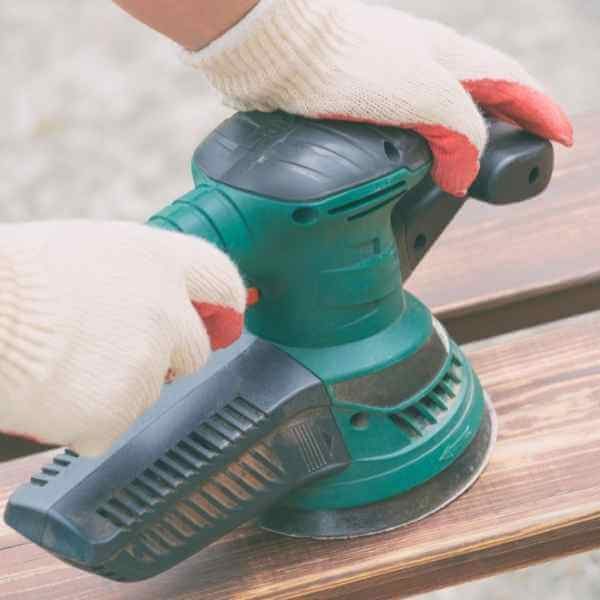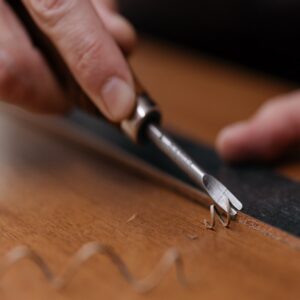A sander is a power tool that helps us to smooth out surfaces by abrading them with an abrasive material. There are many different types of sanders on the market, each designed for a specific purpose. In this blog post, we will discuss the different types of sanders and how they can be used to achieve the best results. We will also provide tips on how to use a sander safely and effectively.
What Is A Sander And For What We Can Use It?
A sander is a machine that smooths surfaces by abrasion with sandpaper. Sanders have a means to attach the sandpaper and are powered by either electricity or compressed air. The first recorded use of a sander was in 1861, when G.T. Ward of Alexandria, Virginia received a patent for his “abrasive machine.”
We are using sanders for different tasks like preparing a surface before painting or staining, removing old paint or varnish, and shaping wood.
Different Types of Sanders
There are many different types of sanders available on the market. The most common types of sanders are:
Orbital Sander
The most common type of sander is the orbital sander. This type of sander is designed for general-purpose sanding and can be used on a variety of materials, including wood, plastic, and metal. Orbital sanders are also available in a variety of sizes, from small handheld models to large floor-standing models.
Belt Sander
Another type of sander is the belt sander. Belt sanders are designed for heavy-duty sanding and can be used on both wood and metal. Belt sanders are available in both portable and stationary models.
Rotary Sander
A rotary sander is another type of sander that is designed for heavy-duty sanding. Rotary sanders are available in both portable and stationary models.
How To Use a Sender?
Now that we have discussed the different types of sanders available, let’s talk about how to use them.
When using an orbital sander, it is important to start with a coarse grit sandpaper and move to a finer grit as needed. When using a belt sander, it is important to keep the sander moving at all times to avoid damaging the material. When using a rotary sander, it is important to keep the sanding pad flat on the surface to avoid damaging the material.
Which Sander Is Best For a Beginner?
If you are new to using sanders, we recommend starting with an orbital sander. Orbital sanders are easy to use and can be used on a variety of materials.
When shopping for an orbital sander, look for one that is lightweight and easy to handle. We also recommend getting an orbital sander with a dust collection system to help keep your work area clean.
Belt sanders are another good option for beginners. Belt sanders are easy to use and can be used on both wood and metal. However, belt sanders can be more difficult to control than orbital sanders, so we recommend starting with an orbital sander before moving on to a belt sander.
What Is The Best Way To Apply The Sander To Wood?
There are a few ways that you can use a sander on wood, but the best way is to go with the grain of the wood. This will help to avoid any scratches or gouges in the wood. You should also make sure that you keep the sander moving so that you don’t create any deep scratches.
When you are finished sanding, you should always vacuum the area to remove any dust particles.
If you are looking to achieve a smooth finish, then you will need to use a finer grit sandpaper. This will help to remove any imperfections in the wood. Once you have achieved the desired level of smoothness, you can then move on to a higher grit sandpaper.
How To Put a Sandpaper On a Sander?
Most sanders come with a hook and loop system that makes it easy to change out the sandpaper. To change the sandpaper, you will first need to remove the old sandpaper from the sander. Once the old sandpaper is removed, you can then take the new sandpaper and attach it to the sander. Make sure that the new sandpaper is attached securely before using the sander.
Can You Use Normal Sandpaper On a Sander?
No, you cannot use normal sandpaper on a sander. Sandpaper is designed to be used with a specific type of sander. If you try to use normal sandpaper on a sander, it will not work properly and could damage the sander.
When shopping for sandpaper, make sure that you get the correct type of sandpaper for the type of sander that you have. You can usually find this information on the packaging of the sandpaper.
How To Hold The Wood While Sanding?
You will want to hold the wood firmly while sanding, but you don’t want to apply too much pressure. The amount of pressure that you apply will depend on the type of sander that you are using.
If you are using an orbital sander, then you will want to apply light pressure. If you are using a belt sander, then you will want to apply more pressure. Remember to keep the sander moving so that you don’t damage the wood.
When Should You Use a Sander?
You should use a sander when you are trying to remove imperfections from a surface. Sanders can be used on both wood and metal, and they can be used to achieve a variety of finishes. If you are new to using sanders, we recommend starting with an orbital sander. Once you have mastered the orbital sander, you can then move on to a belt sander.
How Much Wood Can I Sand Off?
You should only remove as much wood as necessary to achieve the desired result. If you remove too much wood, you can damage the surface. When sanding, you should start with a coarse grit sandpaper and move to a finer grit as needed.
How Long Should I Sand Wood?
The amount of time that you need to sand wood will depend on the type of wood and the desired result. If you are trying to achieve a smooth finish, then you will need to sand longer than if you are just trying to remove imperfections.
Do I Need To Sand With The Grain Or Against it?
You should always sand with the grain to avoid damaging the surface. Sanding against the grain can create deep scratches that will be difficult to remove.
What Causes Sanding Swirl?
There are a few things that can cause sanding swirl. One common cause is using too much pressure when sanding. Another common cause is not keeping the sander moving. If you keep the sander in one spot for too long, it can create swirl marks on the surface.
How Can I Avoid Sanding Swirl?
There are a few things that you can do to avoid sanding swirl. First, make sure that you are using the correct type of sandpaper. Second, don’t apply too much pressure when sanding. Third, keep the sander moving. If you follow these tips, you should be able to avoid most swirl marks.
How Can I Sand Without Getting Dust Everywhere?
There are a few things that you can do to reduce the amount of dust that is created when sanding. First, make sure that the area is well-ventilated. Second, wear a dust mask to avoid inhaling the dust. Third, use a vacuum attachment on the sander to collect the dust as you sand.
If you follow these tips, you should be able to sand without creating too much dust. However, it is important to remember that some dust will always be created when sanding.
What Is The Best Way To Remove Dust After Sanding?
There are a few things that you can do to remove dust after sanding. One option is to use a vacuum attachment on the sander to collect the dust as you sand. Another option is to use a damp cloth to wipe down the surface after sanding.
You should always remove as much dust as possible before moving on to the next step in your project.
What Is The Fastest Way To Sand Wood By Hand?
If you’re sanding by hand, the best way to do it is to use a piece of sandpaper that’s wrapped around a block. This will help you apply even pressure as you sand, and it’ll also save your fingers from getting too sore. Start with a coarse grit sandpaper and then move up to a finer one until the wood is smooth. Remember to sand with the grain of the wood, not against it.
Some Safety Tips For Using a Sander
There are a few safety tips that you should keep in mind when using a sander. First, always wear safety goggles to protect your eyes from dust particles. Second, make sure that you have good ventilation when using a sander. Third, never use a sander on wet wood. Doing so could damage the sander and cause injuries.
When using a sander, always make sure to follow the manufacturer’s instructions. This will help you to avoid any accidents or injuries.
Tips For How to Use a Sander Safely and Effectively
Sanders are powerful tools that can be dangerous if used improperly. To use a sander safely and effectively, follow these tips:
-Read the manufacturer’s instructions carefully before using the sander.
-Wear proper safety gear, including eye protection and a dust mask.
-Never use a sander without a dust collection system in place.
-Keep the sander moving to avoid damaging the surface.
-Do not apply too much pressure when sanding.
-Start with a coarse grit sandpaper and move to a finer grit as needed.
Conclusion
There are different types of sanders for different projects, so be sure to select the right sander for the job. Different sanders also have different features and attachments that can be used to achieve different results.
Be sure to read the manufacturer’s instructions carefully before using any power tool. With a little practice, you’ll be able to get the best results from your sander and complete your projects quickly and easily. Happy sanding!









